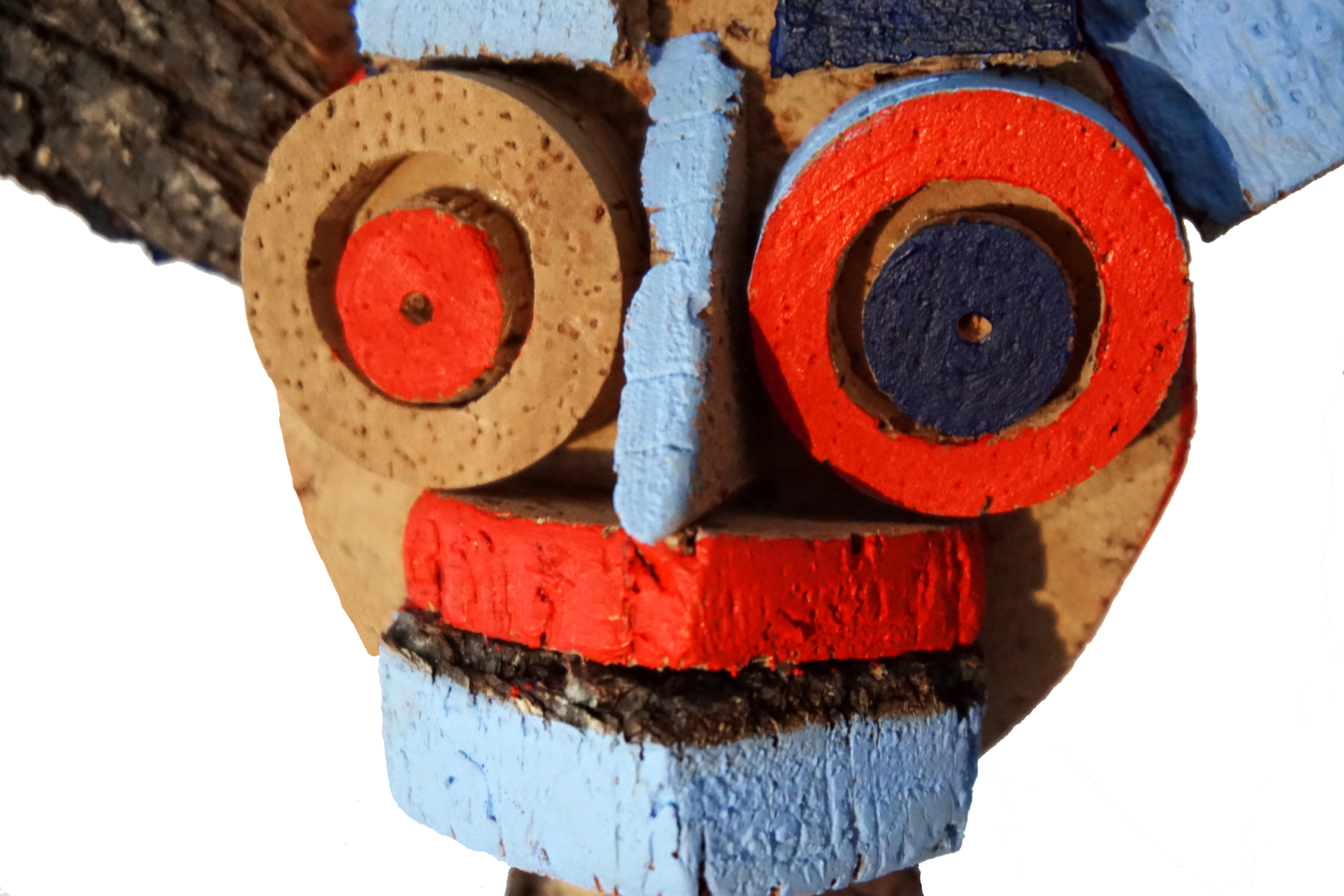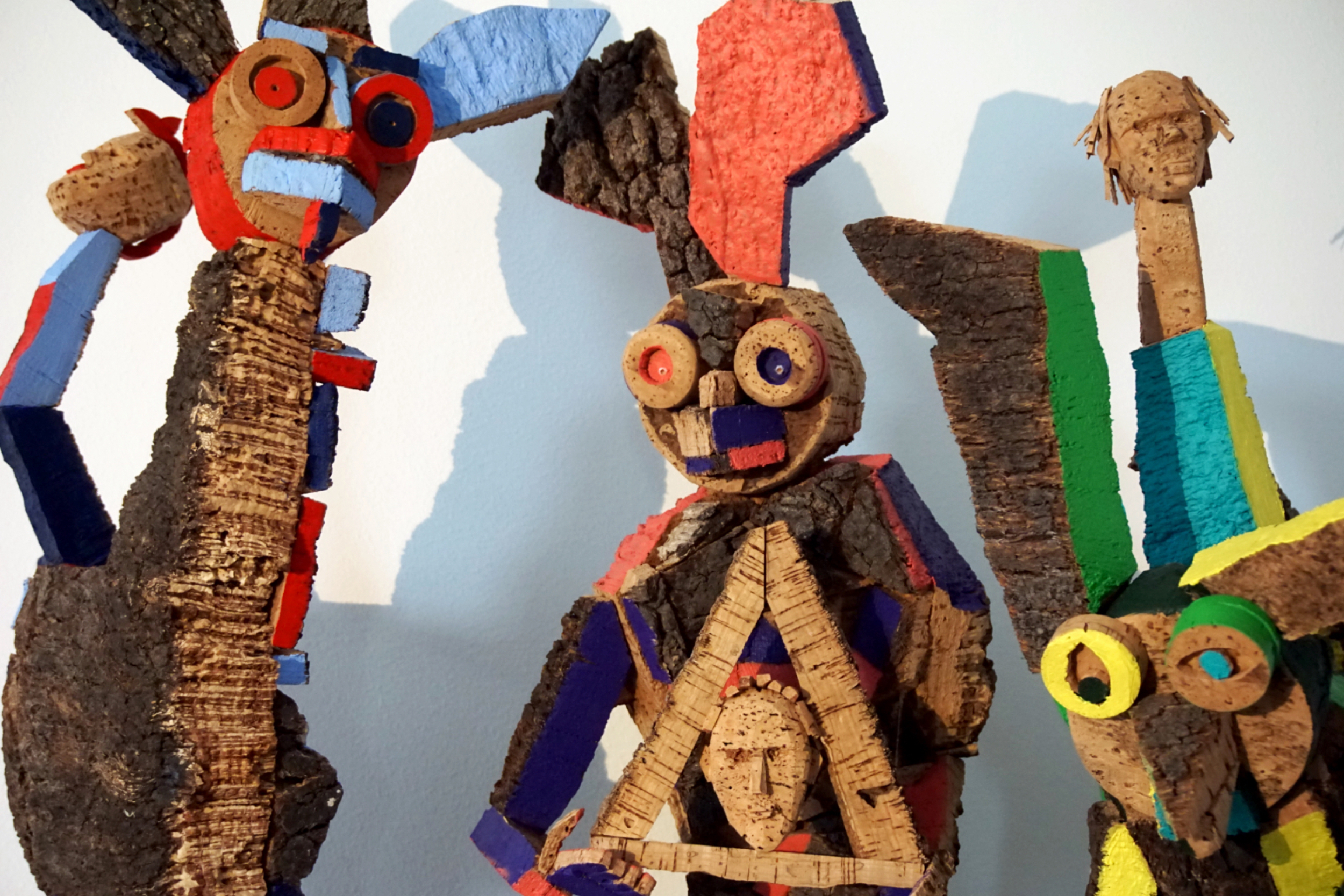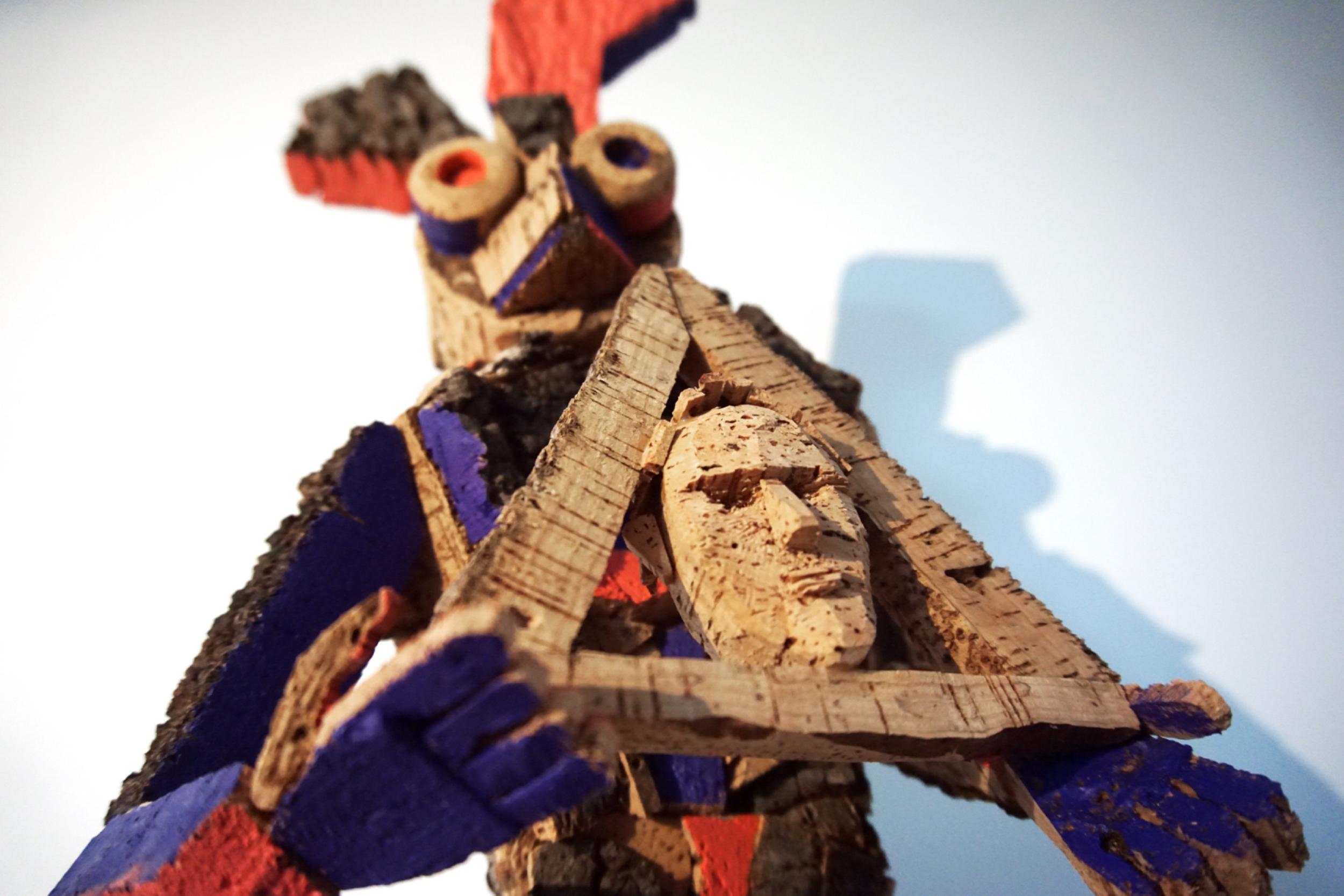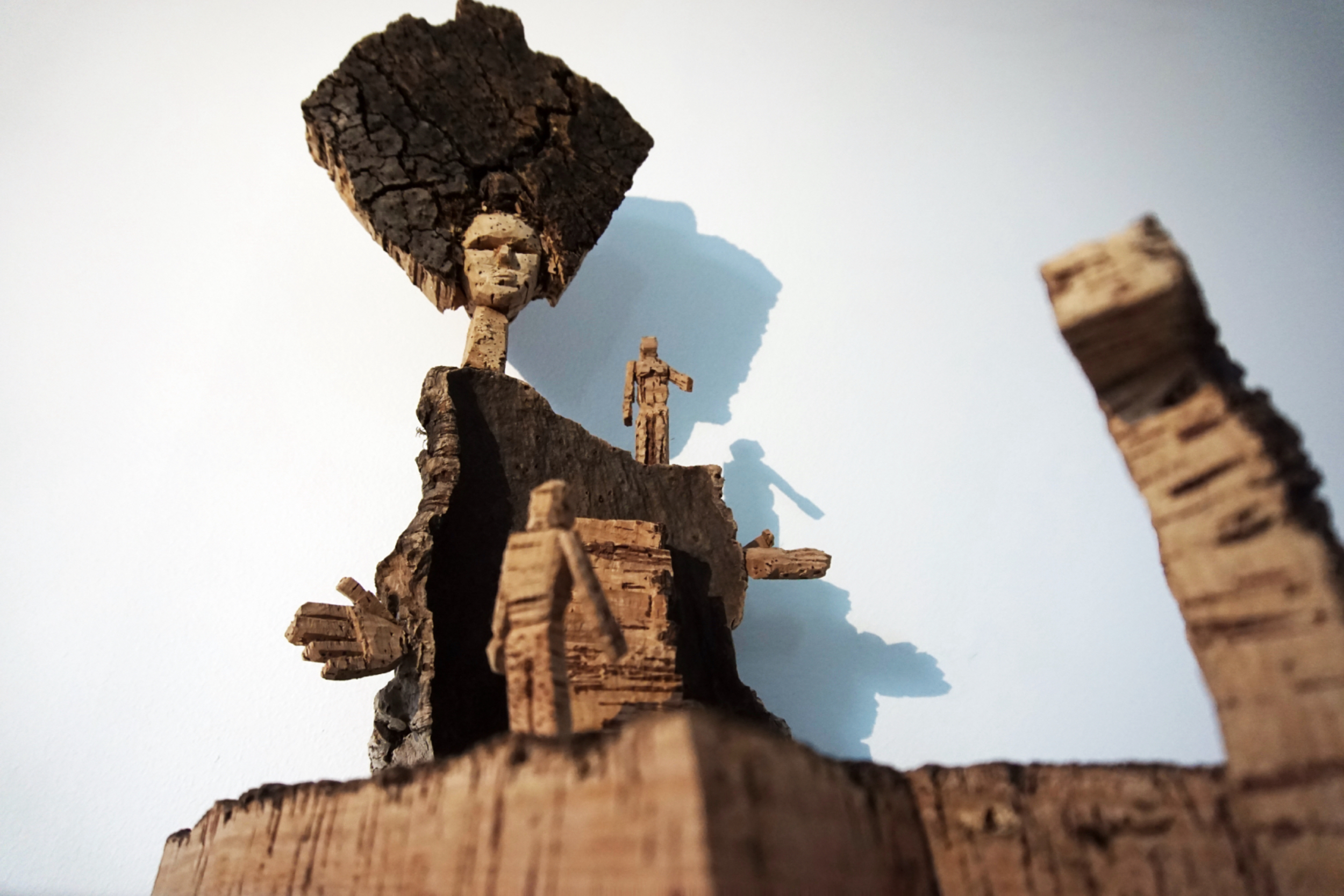Kontakt
- Konstepidemin
- Konstepidemins väg 6
- 413 14 Göteborg
- Sweden
- Hitta hit
- T: 031-82 90 90
- E: info@konstepidemin.se
Stories told by those who lost • Craft Days 2024
— Daniel Espinosa Ponce




Much of the current reality of the countries of the global south is related to a past mythologized by their colonists. The cultural imposition distorted the knowledge of local populations who maintained a worldview rooted in their relationship with the nature.
This exhibition presents three themes: Dark Constellations, Spirit of Matter and Pre-Columbian Quantum. Stories that were not relevant to the colonizers but have managed to survive to this day. Stories that must be told.
Dark constellations
The Andean people maintained a relationship of correspondence with the night sky. They believed that the Milky Way was a river and it was the source of all the water on Earth.
In many cultures worldwide, people observe forms in groups of stars that resemble certain figures. The people of the Andes, in contrast, often spotted their constellations in the dark spaces between the stars, known as black clouds. In these dark clouds, they saw animals and other elements of daily life. Legends say, Yacana (llama) and her calf, walk along the river that crosses the entire sky and, as they walk, the night gets darker. Micheq (shepherd), is the caretaker of the sidereal llama and its offspring. Atoq (fox), chases the llamas. Yutu (partridge), appears in the sky, like a bird chasing a toad. Hanpátu (Toad), the clearer this constellation is viewed in the sky, the more omens of rain and abundance. And the Mach’acuay (snake), it appears in August and hides in February, the time when the harvest begins.
Spirit of Matter
The essence of the Andean cosmology is found in the constant relationship between the cosmos, human beings and nature. For the Andean culture, everything is alive. Therefore, everything is part of a whole and nothing lacks spirit.
The Andean worldview is a philosophy of life that allows the connection between all the elements of the cosmos. For this reason, the harmonious relationship of respect and gratitude towards life, was manifested in daily acts through rituals and social behaviors.
Pre-Columbian Quantum
When Max Planck presented the theory of quantum physics, he began the study and development of concepts that, in a certain way, had brought together scientific evidence and spiritual intuitive perception. Later, throughout the 20th and 21st century, scientists ”discovered” the possibility of expanding our reasoning towards the incomprehensible, taking the quantum system of probabilities as a starting point. Recently, in the new millennium, there is room for the American ancestral traditions to once again have the ontological value that they deserve. In recent years of research, scientists found several examples of ancestral practices that ”prove” quantum theories. For example: The theory proposed by Werner Heisenberg in 1925, the Quantum Superposition Principle, which determines the ability of particles to be in several states at the same time. Shamans in America, to identify the disease in a patient, ingested concoctions of sacred plants to ”introduce” themselves into the sick body and find its diagnosis and treatment. Therefore, being in different bodies at the same time.
Daniel Espinosa Ponce
(Quito, Ecuador, 1979.)
Painter, sculptor, cultural manager and art teacher.
He completed his studies at the Faculty of Fine Arts at the Universiad San Francisco de Quito, Ecuador (2005) and later a postgraduate course in City Management and Creative Entrepreneurship at the Universidad Nacional de Córdoba, Argentina. (2015).
He always had an attraction towards ancient history, nature, stars and especially, towards pre-Columbian cultures and their religiosity. His main interest has been focused on spirituality, cosmology and shamanic practices.
His sculptural work is related to the collection and transformation of forgotten raw materials such as fragments of pre-Columbian ceramics (found by chance on the shores of Ecuadorian beaches), stone, wood or scrap. He also works in painting and illustration.
His artistic career has been carried out in the field of visual arts, permanently exhibiting his work in Ecuador and internationally, in Venezuela, El Salvador, United States, France, Italy, UK and Sweden. He has also done work in the field of illustration of texts, set design, muralism and setting of spaces.
He has won some relevant awards such as: USFQ Plastic Arts Award (2005), Honorable Mention at the National Sculpture Biennial, Ibarra 2021 and the Special Prize ARS – Sustainability and Art at Laguna Art Prize in Venice, Italy. (2023)
He currently lives and works his artwork in Göteborg, Sweden.
Part of Craft Days 2024
The Craft Days Biennial takes place from May 2nd to May 5th, 2024, with the aim of highlighting, strengthening, and showcasing the field of crafts in the Västra Götaland region.
Art galleries, cooperatives, educational institutions, and artist-driven initiatives come together in a rich program featuring exhibitions, workshops, lectures, and much more. Craft Center is the project leader and coordinates the event in collaboration with Konstepidemin, the Textile Museum, Form & Folk, and Not Quite. Craft Days 2024 is supported by the City of Gothenburg and the Västra Götaland Region.
Mycket av verkligheten i länderna i den globala södern idag är kopplad till en förflutenhet som idealiserats av deras kolonisatörer. Den kulturella påtvingelsen förvrängde kunskapen hos lokalbefolkningen som hade en världsbild baserad på deras relation till naturen.
Denna utställning presenterar tre teman genom skulptur: Mörka stjärnbilder, Materialets ande och Förkolombiansk kvantfysik. Det är berättelser som inte var viktiga för kolonisatörerna, men som ändå har överlevt till idag. Det är berättelser som måste berättas.
Mörka stjärnbilder
De andinska folken upprätthöll en korrespondensrelation med natthimlen. De trodde att Vintergatan var en flod och källan till allt vatten på jorden. I många kulturer över hela världen observerar människor former i stjärngrupper som liknar vissa figurer. Andinska folket såg däremot ofta sina stjärnbilder i de mörka utrymmena mellan stjärnorna, kända som svarta moln. I dessa mörka moln såg de djur och andra element i dagliga livet. Legender säger att Yacana (lama) och hennes kalv går längs floden som korsar hela himlen och att natten blir mörkare när de går. Micheq (herde) är vårdare av sidereal lama och dess avkomma. Atoq (räv) jagar lamorna. Yutu (rapphöna) dyker upp på himlen som en fågel som jagar en padda. Hanpátu (padda), ju tydligare denna stjärnbild ses på himlen, desto fler omen om regn och överflöd. Och Mach’acuay (orm), den dyker upp i augusti och gömmer sig i februari, tiden då skörden börjar.
Materialets ande
Essensen av den andinska kosmologin finns i det ständiga förhållandet mellan kosmos, människor och natur. För den andinska kulturen är allting levande. Därför är allt en del av en helhet och ingenting saknar ande. Den andinska världsbilden är en livsfilosofi som möjliggör anslutning mellan alla element i kosmos. Av denna anledning manifesterades den harmoniska relationen av respekt och tacksamhet gentemot livet i dagliga handlingar genom ritualer och sociala beteenden.
Förkolombiansk kvantfysik
När Max Planck presenterade kvantfysikens teori började han studera och utveckla begrepp som på ett vis samlade vetenskapliga bevis och andlig intuitiv perception. Senare, under 1900- och 2000-talet, ”upptäckte” forskare möjligheten att utöka vårt resonemang mot det obegripliga, med kvantens sannolikhetsystem som utgångspunkt. På senare tid, under det nya millenniet, finns det utrymme för de amerikanska urfolkstraditionerna att återigen få det ontologiska värde de förtjänar. Under de senaste åren av forskning fann forskare flera exempel på uråldriga metoder som ”bevisar” kvantteorier. Till exempel: Werner Heisenbergs teori från 1925, kvantöverlappningsprincipen, som fastställer partiklars förmåga att vara i flera tillstånd samtidigt. Schamaner i Amerika, för att identifiera sjukdom i en patient, intog blandningar av heliga växter för att ”införa” sig i den sjuka kroppen och hitta dess diagnos och behandling. Därför befinner de sig i olika kroppar samtidigt.
Daniel Espinosa Ponce
(Quito, Ecuador, 1979.) Konstnär, skulptör, kulturförvaltare och konstlärare.
Han avslutade sina studier vid Fakulteten för bildkonst vid Universitetet San Francisco de Quito, Ecuador (2005) och senare en eftergymnasial kurs i stadsförvaltning och kreativt företagande vid Universidad Nacional de Córdoba, Argentina. (2015).
Han hade alltid en dragning mot forntida historia, natur, stjärnor och speciellt mot förkolombianska kulturer och deras religiositet. Hans främsta intresse har varit inriktat på spiritualitet, kosmologi och shamanistiska praktiker. Hans skulpturala arbete är kopplat till insamling och omvandling av glömda råmaterial såsom fragment av förkolombiansk keramik (funna av en slump på stränderna vid ecuadorianska stränder), sten, trä eller skrot. Han arbetar också med måleri och illustration.
Hans konstnärliga karriär har utförts inom bildkonstens område, där han ständigt har ställt ut sitt arbete i Ecuador och internationellt, i Venezuela, El Salvador, USA, Frankrike, Italien, Storbritannien och Sverige. Han har också utfört arbete inom illustration av texter, scenografi, muralmålning och inredning av utrymmen. Han har vunnit några betydande priser såsom: USFQ Plastic Arts Award (2005), Hedersomnämnande vid den Nationella Skulpturbiennalen, Ibarra 2021 och det Specialpris ARS – Hållbarhet och Konst vid Laguna Art Prize i Venedig, Italien. (2023)
Han bor för närvarande och arbetar med sin konst i Göteborg, Sverige.
En del av Craft Days 2024
Biennalen Craft Days går av stapeln 2-5 maj 2024 och arrangeras med syfte att lyfta, stärka och synliggöra konsthantverksfältet i Västra Götalandsregionen.
Konsthallar, gallerier, kooperativ, utbildningar, institutioner och konstnärsdrivna initiativ samlas i ett rikt program med utställningar, workshops och föreläsningar och mycket mer. Konsthantverkscentrum är projektägare och koordinerar evenemanget i samarbete med Konstepidemin, Textilmuseet, Form & Folk och Not Quite. Craft Days 2024 genomförs med stöd från Göteborg Stad och Västra Götalandsregionen.

